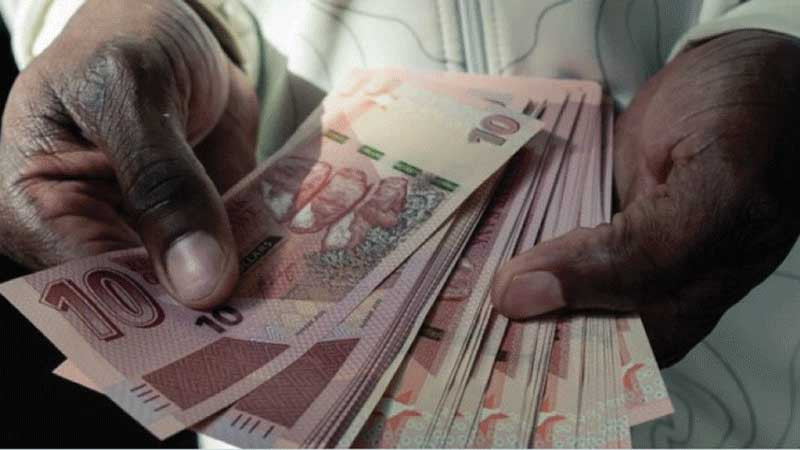
ZIMBABWE plans to end the dollarisation regime on December 31 2030, but experts have cautioned that this goal will not be achieved unless confidence issues are resolved and sufficient foreign currency reserves are accumulated.
The country abandoned its currency in 2009 to tame inflation, opting instead to use foreign currencies, mostly the United States dollar (USD).
The government reintroduced the local currency in 2019, but it rapidly lost value again.
Recently, President Emmerson Mnangagwa extended the use of the greenback for transactions in the economy by another five years to 2030, a move aimed at allaying market concerns about a possible policy change in the nation's multi-currency regime.
The government had previously said the multi-currency system would end in 2025. Certain banks had stopped making loans beyond 2025 as a result of this.
By designating 2030 as the deadline for using the USD, Zimbabwe hopes to put a stop to 10 years of dollarisation.
However, according to economic analysts, who spoke to the Zimbabwe Independent, a lot more work needs to be done before 2030 for the nation to transition to a single currency.
Low foreign currency reserves and a lack of confidence are some of the most pressing problems.
- Mr President, you missed the opportunity to be the veritable voice of conscience
- ED to commission new-look border post
- Zanu PF ready for congress
- EU slams Zim over delayed reforms
Keep Reading
Economist Cornelius Dube said: “Currently, we are highly dollarised as a country. If we somewhat want to end the use of the USD by 2030, then that means there should be pronounced steps that are visible on the ground starting from now.
“We should see some attempts from government to create demand for the local currency.
“For example, government can start by accepting some tax heads in local currency, like pay-as-you-earn (PAYE). Remember, there are some non-governmental organisations that are 100% dollarised and have workers who pay PAYE in USD.
“So, probably the government should just announce PAYE as exclusively payable in local currency. This will stimulate demand for the local currency. Then as we proceed, probably government can also make all taxes payable in local currency,” Dube added.
He said that way, the future of the Zimbabwe dollar would be more or less assured.
“Right now, why would anyone look for local currency if you can just go and buy using USD? There's no demand for local currency,” Dube said.
According to Dube, the government has been implementing measures that primarily target the local unit's supply rather than demand side. The authorities have been limiting the money supply since May 2023, delaying payments to contractors among other things.
“They should start going out of their way, to make the local currency attractive. That way I am sure the 100% dedollarisation strategy by 2030 might work,” he said.
According to the Reserve Bank of Zimbabwe(RBZ), about 80% of transactions are settled in foreign currency, signalling a complete dollarisation of the economy.
Financial analyst Ranga Makwata said the 2030 sunset date is not set in stone. Before 2030, he said, more statutory instruments addressing currency-related issues will likely be created, considering the trend of "policy chopping and changing".
“The extension to 2030 looked knee jerk and more such reactionary measures could be in store,” he said.
“Now to the issue of whether or not multicurrency system will be able to be ended by 2030, I think it will depend on how efforts to stabilise the ZWL (Zimbabwe dollar) will pan out.
“A lot of work is needed to build public confidence on the local currency. Without it, it’s difficult to see how the local currency can be used as the mono-currency without suffering the same fate of hyperinflation, depreciation and ultimate rejection by the public,” Makwata said.
He said there was no benefit in rushing the ZWL return as mono-currency without first addressing the confidence issues.
“Forcing the currency on the people will not work especially as the economy has increasingly informalised,” Makwata said.
“It is difficult to police how the people transact in the informal sector and it will remain a USD market until the confidence on a local currency has returned. We need to build on the stability brought by multicurrency to create conditions that will support a smooth return of the ZWL.”
This will not be the first time the government tried to re-introduce the local unit. It tried in 2019 and failed.
Another economist Farai Chigora said the government should address the issue of production before thinking about mono-currency.
“It's a very difficult thing to do, especially now. The reason why we are having all this multi-currency it's because we don't have anything that is storing value, being a medium exchange at a global level,” he said.
“As long as we don't have something that is backed by gold and valuable in all aspects across the globe, then there is nothing we can do. Again, it's difficult to say by 2030, we will be having our own local currency because we don't have industry that is producing optimally.
“We import a lot of stuff as a country. As you can see our exports and imports balance is always negative. All these factors show that we are not ready to embrace mono-currency regime.”
Zimbabwe registered a negative trade balance of US$1,24 billion during the seven months to July 2023, up 16% compared to the prior period, according to data from the Zimbabwe National Statistics Agency.
The trade deficit stood at US$1,07 billion during the same period last year.
This means Zimbabwe is spending more foreign currency to import goods and services than it is exporting.
This, analysts say, is a sign that the country was not ready for mono-currency.
Bulawayo-based economist Stevenson Dhlamini said the country needs to take consideration factors that necessitated the use of the USD.
“If the macroeconomic fundamentals are aligned and economic stability sustainably achieved, I believe that the economy will gravitate towards a mono-currency that can be domestically and internationally acceptable,” he said.
However, according to economist Prosper Chitambara, the nation still has a lot of time to stabilise the macroeconomic environment and ensure its sustainability through institutional changes and monetary discipline.
“We should be on course in 2030 if we are able to stick to the macroeconomic and institutional reforms agenda.
That could put us in good steady in terms of dedollarisation roadmap. But ultimately, it's all about market confidence. Without reforms you can't sustain confidence,” he said.
Trust Chikohora, an economist, said to be able to sustain the Zimbabwe dollar as a mono-currency, the country needed to have sufficient reserves to be able to defend the currency.
In addition, the market needs to gain some confidence in the local currency.
“So, there is enough time between now and 2030 for that to be achieved, provided the authorities put in place right policies, follow them and be disciplined in implementing those policies,” he said.
“We will need to generate a lot of exports, which would ideally be able to meet imports even be in excess, that is also including diaspora remittances, foreign direct investment, development aid as well as financing from the international community so that we generate sufficient foreign currency reserves to have a sustainable local currency.”
Chikohora said the authorities needed to develop a culture where they seem to be disciplined in terms of managing the economy, exchange rate, dealing with issues of money supply growth so that citizens will then develop confidence in the financial management system.
This will help the economy to develop confidence in the local currency at the time when it eventually becomes a mono-currency.











